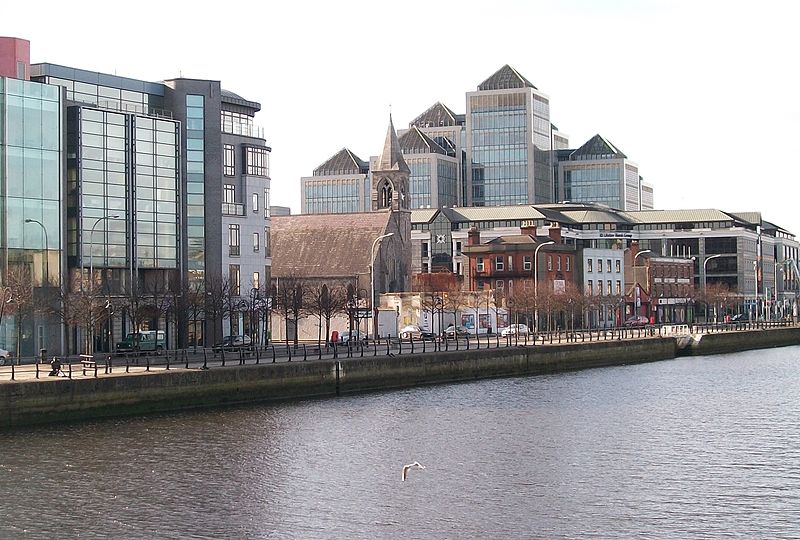By Donal Donovan
After many years of extraordinary success the dramatic collapse of the Irish economy in 2008 was unprecedented in the history of post-war industrial countries. Who and what was responsible for the demise of the poster boy “Celtic Tiger?” What lessons can be learned form the Irish debacle and can the Tiger come roaring back?
(1) Until around five years ago, the Irish economy was the envy of the world.
During the nineties, the rise of the Celtic Tiger was one of the most remarkable post-war industrial country phenomena. A relatively poor country on the periphery succeeded in transforming itself into one of the richest countries in Europe. The key was the massive inflow of foreign direct investment, as US and other multinationals sought to take advantage of Ireland’s location and young, well-educated labour force – the only English-speaking country in the common currency euro area. To be sure, sound financial and macroeconomic policies also helped inspire confidence. Ireland experienced annual growth rates of almost 10% at times, living standards soared, and emigration — the hallmark of the Irish – turned into net immigration. Foreigners, especially from Eastern Europe, flocked to take advantage of the booming economy.

Awaiting an upturn in the Irish economy. This section of City Quay between Moss Street and Prince’s Street, surrounded by steel and glass buildings of the Celtic Tiger Era, has been saved from demolition by the severe downturn in the Irish economy. Photo by Eric Jones of geograph.co.uk. Creative Commons license via Wikimedia Commons.
(2) Things then started to go horribly wrong, although it was not recognized at the time.
Starting around 2002, the technology based export led growth began to turn into a property bubble. Fuelled by special tax incentives and unlimited funding at low euro area interest rates, the Irish banks went on a splurge of reckless lending to property purchasers and developers. Government budget expenditures soared, financed by revenues from the artificially booming property sector. House and land prices soared to levels among the highest in the world and the population engaged in a frenzy of borrowing to acquire property before it was too late…
(3) The economy started to collapse around 2008.
In 2008, following the bankruptcy of Lehman Brothers in the United States, the property bubble burst in a spectacular fashion. Almost overnight, prices began to plummet, eventually losing between 60-80% of their value. All the Irish banks became hopelessly insolvent, the budget deficit soared to almost unimaginable heights as the earlier surge in expenditures could not be reversed, and unemployment tripled. The fall in output was probably the largest ever experienced by an industrial country since the Second World War. Ireland quickly found itself unable to borrow on international markets and in November 2010, had to follow Greece and seek ignominious recourse to an emergency bail out from the IMF and the EU.
(4) Much progress has since been made but there is still a tough road ahead.
Under the strict insistence of the IMF/EU, much — albeit painful — progress has been achieved in righting the financial ship of state in the last four years. The enormous budget deficit has been slowly but steadily reduced, and the massive financial problems of the banks have been addressed. But Ireland’s debt has unavoidably continued to soar, and while the economic decline appears to have bottomed out, unemployment remains stubbornly high at around 14% and large scale emigration has resumed. Moreover, it is not clear that steps are being taken to tackle decisively the major failings in political and economic governance that caused the debacle in the first place
(5) Can the Celtic Tiger rise again?
It is very difficult to imagine a return to anything near the heady heights of the Celtic Tiger. Ireland’s economy is very heavily dependent on exports and the EU growth outlook remains very clouded. Increasingly, there are questions as to whether Ireland’s preferential corporate tax regime – key to attracting foreign investment over the years — can be sustained in the face of pressures from other countries. Still, even if real incomes in Ireland return to around their 2000 levels, this would still be an enormous improvement compared to the seventies when Ireland joined the EU as its then poorest member.
Dr. Donal Donovan is a Member of the Irish Fiscal Advisory Council, Adjunct Professor at the University of Limerick, and Visiting Lecturer at Trinity College Dublin. He is a former deputy director at the International Monetary Fund with considerable experience in the area of financial crises. He is co-author, with Antoin E. Murphy, of The Fall of the Celtic Tiger: Ireland and the Euro Debt Crisis.
Subscribe to the OUPblog via email or RSS.
Subscribe to only business and economics articles on the OUPblog via email or RSS.
The post Five important facts about the Irish economy appeared first on OUPblog.


